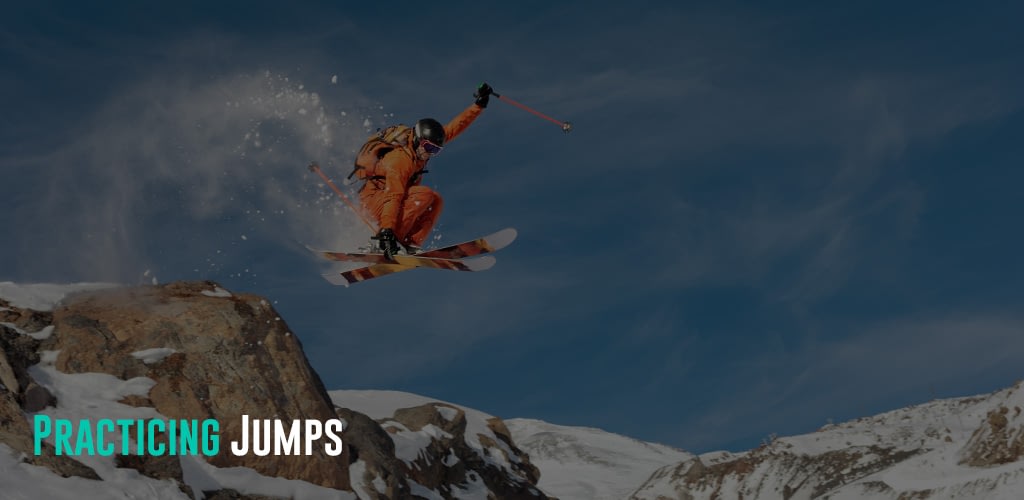If you successfully carve and control yourself down all blue runs and single diamonds with relative ease, then welcome to intermediate skiing! The fun is only beginning at this point, and the challenges from here become increasingly dangerous, requiring more incredible skill and comfort. Many folks will find it hard to break out of intermediate skiing to distinguish themselves as advanced skiers. Nevertheless, the slopes, beauty of the mountains, and challenges await you! Let’s dive in and explore how to excel as an intermediate skier.
Be sure to check out our beginner guide in the series here.
Featured Image Source
Don’t Get Caught Up With Distractions
As always, to get better, you need repetition that challenges you. Many runs make you test your limits. Many folks start getting caught up with distractions that kill the day. Such as going to lunch, taking breaks, and sticking to popular runs with long lines. You want to avoid all of this if you want to progress. My wife and I generally eat breakfast before skiing and sometimes pack a snack for the day. We never go to get lunch at the busy cafeterias. That could quickly kill an hour or two.
Further, many beginner and intermediate runs tend to have long lines, especially on the resort’s front side. Go past all that to the back side and seek out challenging runs where the lift lines are manageable. Skipping lunch will help, too, as many folks will eat, and lines will shorten. Be comfortable just going balls to the wall during the ski day. Resting is done on the lifts; otherwise, you embrace the ski day.
Tightening Your Carve & Form

At this point, you are getting comfortable with carving, but your form may not be superb, and your carving may need work. Sheer practice will help, but you need ways to evaluate your form. If you have a skiing buddy, it is good to have them watch you and critique your form. In particular, are your “S” carve rounded and uniform, are your legs brought in tight and turning uniform (for skis), are your board predominantly pointing downhill, or are you breaking too much? Do a segment of a run and have fun evaluating each other. Make sure you do the run repeatedly to see if you can make incremental improvements to your form.
Another tip for skis when going into a turn is that the foot with the ski pointing uphill should move forward before the turn. As you turn, that edge will receive a fair amount of pressure during the carve, making controlling the turn easier at faster speeds. Making the “S” carve even tighter means you are going faster and controlling the carve still, so continue to tighten the turns until your boards are predominantly pointing down the slope.
Practicing Jumps

Jumping is worthwhile for all intermediate skiers. It helps you become more comfortable with speed and controlling moments where your boards leave the ground, even accidentally. But, as with all things, you need lots of repetition. So, the best way to start practicing and building comfort is by hitting the small trick park at your resort. These will have extra small jumps that you should be able to hit repeatedly.
Your goal should be to take the jump slowly. Maybe you get some air, maybe not, but stay standing. Do this repeatedly to feel comfortable. Then you will increase the speed, eventually, take it at maximum speed, and embrace some air. The important thing is when landing, you want your legs to be slightly bent, not straight. When you land, the bend in your knees should compress to absorb the impact and allow you to keep upright.
Achieving higher jumps
When you are comfortable with this point, it is time to introduce an “ollie” into your jump. You’ve been practicing the compression to absorb the shock for landing. Next, you will use this same compression in your legs to ollie. As you take the jump, your legs will compress downward as your body lowers, and your legs will compress as the jump pushes upward. At the point of compression, you must push down with your legs and uncompress them, causing a massive jump as you use your legs as a spring.
This can be unsafe initially, as it is significantly more air than you can achieve without an ollie. Don’t forget to compress as you land to absorb the impact. Practice the ollie until it feels more comfortable. Then, you can graduate to bigger jumps to keep progressing.
You are falling while jumping, which is expected. It is scary and will freak your senses out. Keep practicing to get your mind and body used to it. It is essential to try not to catch yourself with your hands. If you use ski poles, put those away for jumping, as they can cause thumb hyperextension. Practice makes perfect.
Embracing Diamond Runs

Eventually, blue runs will become more of your typical highways to get to the more challenging runs versus challenging runs themselves. To progress, you must start seeking out challenging single-diamond runs. Often, steeper runs, such as single and double diamond runs, will have unusual mounds formed by skiers using the same tracks repeatedly.
These are called “moguls” and can be the bane for some. However, moguls are more than a terrain feature you should master. Moguls require you to match your carve to the ebb and to turn off the moguls already in place. You cannot carve your track. The critical thing for moguls is to try to round them in the middle of the moguls and use the natural curves of the moguls to help move your boards into position for the next turn. For moguls, practice going straight down them, a natural carve that goes straight down the natural patterns in the mogul. If you end up jumping moguls, mark it as a mistake and continue practicing until you can straight down them.
Conclusion
You are well on your way to becoming an advanced skier who feels comfortable in the backcountry and double diamonds! So keep at it and practice, practice, practice!
Start planning your trip now with Travel-Wise’s free trip-planning tools to have you on your way to your destination faster than ever!

